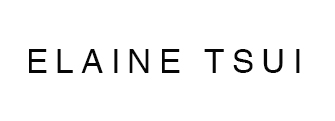Seeded in the late 1990s, and further conceptualized in the late 2000s, M+ is one component of the master plan for the West Kowloon Cultural District; some of the cultural venues are still under construction and some have been completed! Yes I am talking about the recent M+ Museum completion! M+ Museum is one the places in Hong Kong I have book-marked it for a visit ever since I knew Herzog & de Meuron partnering with TEP Farrells won the competition to design a key venue in creating interdisciplinary exchange between the visual arts and the performing arts in Asia. I visited during the opening week and finally had time to sit down and share with you all my experience.

M+ with 65,000 square-metre features 3 Cinemas, a mediatheque, a learning hub, 33 galleries across 17,000 square metres of exhibition space. When I first entered the museum, I was already in love since it reminded me of the new Tate Modern in London. They are a bit raw but classic and timeless materials like concrete floors, steel and wooden finish elements.

Found Space
Round Table–Side by Side (1997) - Chen Zhen
Going up to the gallery space on 2/F, there is a spiral staircase leading to the sculpture garden that immediately drew my attention since there was a big crowd surrounding it! I went closer and figured that people were queuing for photos with the staircase. I must say this is one of the very popular Instagram spots in M+!

I strolled around the museum and absorbed the art from one gallery to another. The experience of wandering around the museum, seeking to find something to connect with it, was as much an emotional experience as an intellectual one. With the idea that objects are transformative, bringing together thinking and emotions. It is this combination of thought and feeling that is at once inspiring, a catalyst for creativity and conversation. It is very interesting how we make objects part of ourselves offer a language for interpreting the intensity of our connections to the world of things, and for discovering the similarities in how we relate to the animate and inanimate.
East Gallery
Left: Rattan Round Chair (1961),model C-315-S, designed by Kenmochi Isamu, manufactured by Yamakawa Rattan Japan Inc.
Yamakawa Rattan Japan Inc.
Middle: Una Famiglia (2006 made 2019 ), designed by Estudio Campana
Right: Rattan chair, designed circa 1954; made 1950s–60s,
Kowloon Rattan Ware Co.
On Wall: Building hong kong 03 / red white blue, designed by Stanley Wong
Focus Gallery
Crucified TVS —Not a Prayer in Haven (2021), created by Young-Hae Chang
West Gallery
Stratégie en Chambre 紙上談兵 (1999),created by artist Wang Du
The vertical windows in the galleries allow visitors to look out over the landscape and curators have cleverly made relation to the art work.

One of my favorite design elements of M+ is the corrugated ceramic tile not only used in façade with referencing traditional Chinese roofs, but also the wall cladding/ screen designed in such a way echoing the exterior.


Inside the gallery space
Typical Tower Details © Herzog & de Meuron
Types of Ceramic Cladding/ Screen © Herzog & de Meuron
As mentioned, the reference of the corrugated Chinese roof were also found inside the building, with three types of ceramic cladding/ screen in the lobby to fit different functions:
Check out how the ceramic cladding ideas have integrated into the ventilation systems.

After spending a couple of hours in the galleries, my friend and I decided to get ourselves a cup of coffee and sat in the courtyard to enjoy the breeze and sea view.


Section of the Courtyard © Herzog & de Meuron
If you are in Hong Kong and still haven’t been to M+, I highly encourage you all to spend an afternoon there. Or feel free to check out the books releated in case you cannot make a visit:











No Comments